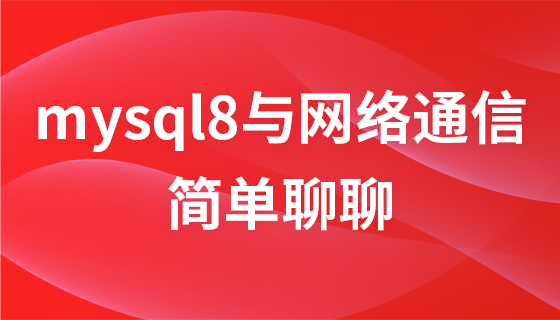无需锁定,在无界队列上使用新的atomic.Pointer类型实现
来源:stackoverflow
时间:2024-02-08 13:45:25 273浏览 收藏
小伙伴们对Golang编程感兴趣吗?是否正在学习相关知识点?如果是,那么本文《无需锁定,在无界队列上使用新的atomic.Pointer类型实现》,就很适合你,本篇文章讲解的知识点主要包括。在之后的文章中也会多多分享相关知识点,希望对大家的知识积累有所帮助!
问题内容
我正在尝试实现 michael 和 scott 的这个非阻塞队列。
我正在尝试使用 go 1.19 中引入的新的atomic.pointer 类型,但我的应用程序中出现了数据争用。
这是我的实现:
package queue
import (
"errors"
"sync/atomic"
)
// LockfreeQueue represents a FIFO structure with operations to enqueue
// and dequeue generic values.
// Reference: https://www.cs.rochester.edu/research/synchronization/pseudocode/queues.html
type LockFreeQueue[T any] struct {
head atomic.Pointer[node[T]]
tail atomic.Pointer[node[T]]
}
// node represents a node in the queue
type node[T any] struct {
value T
next atomic.Pointer[node[T]]
}
// newNode creates and initializes a node
func newNode[T any](v T) *node[T] {
return &node[T]{value: v}
}
// NewQueue creates and initializes a LockFreeQueue
func NewLockFreeQueue[T any]() *LockFreeQueue[T] {
var head atomic.Pointer[node[T]]
var tail atomic.Pointer[node[T]]
n := &node[T]{}
head.Store(n)
tail.Store(n)
return &LockFreeQueue[T]{
head: head,
tail: tail,
}
}
// Enqueue adds a series of Request to the queue
func (q *LockFreeQueue[T]) Enqueue(v T) {
n := newNode(v)
for {
tail := q.tail.Load()
next := tail.next.Load()
if tail == q.tail.Load() {
if next == nil {
if tail.next.CompareAndSwap(next, n) {
q.tail.CompareAndSwap(tail, n)
return
}
} else {
q.tail.CompareAndSwap(tail, next)
}
}
}
}
// Dequeue removes a Request from the queue
func (q *LockFreeQueue[T]) Dequeue() (T, error) {
for {
head := q.head.Load()
tail := q.tail.Load()
next := head.next.Load()
if head == q.head.Load() {
if head == tail {
if next == nil {
return head.value, errors.New("queue is empty")
}
q.tail.CompareAndSwap(tail, next)
} else {
v := next.value
if q.head.CompareAndSwap(head, next) {
return v, nil
}
}
}
}
}
// Check if the queue is empty.
func (q *LockFreeQueue[T]) IsEmpty() bool {
return q.head.Load() == q.tail.Load()
}
我在这里发现了一个不同的实现,它可以在我的应用程序中工作而无需数据竞争,但我似乎无法弄清楚两者之间到底有什么不同。
感谢任何帮助或反馈!
正确答案
事实证明,更改一些内容可以解决问题。
第一个变化:
var n = node[t]{}
head.store(&n)
tail.store(&n)
第二个更改是更改 dequeue() 返回签名。
最终文件如下所示:
package queue
import (
"sync/atomic"
)
// LockfreeQueue represents a FIFO structure with operations to enqueue
// and dequeue generic values.
// Reference: https://www.cs.rochester.edu/research/synchronization/pseudocode/queues.html
type LockFreeQueue[T any] struct {
head atomic.Pointer[node[T]]
tail atomic.Pointer[node[T]]
}
// node represents a node in the queue
type node[T any] struct {
value T
next atomic.Pointer[node[T]]
}
// newNode creates and initializes a node
func newNode[T any](v T) *node[T] {
return &node[T]{value: v}
}
// NewQueue creates and initializes a LockFreeQueue
func NewLockFreeQueue[T any]() *LockFreeQueue[T] {
var head atomic.Pointer[node[T]]
var tail atomic.Pointer[node[T]]
var n = node[T]{}
head.Store(&n)
tail.Store(&n)
return &LockFreeQueue[T]{
head: head,
tail: tail,
}
}
// Enqueue adds a series of Request to the queue
func (q *LockFreeQueue[T]) Enqueue(v T) {
n := newNode(v)
for {
tail := q.tail.Load()
next := tail.next.Load()
if tail == q.tail.Load() {
if next == nil {
if tail.next.CompareAndSwap(next, n) {
q.tail.CompareAndSwap(tail, n)
return
}
} else {
q.tail.CompareAndSwap(tail, next)
}
}
}
}
// Dequeue removes a Request from the queue
func (q *LockFreeQueue[T]) Dequeue() T {
var t T
for {
head := q.head.Load()
tail := q.tail.Load()
next := head.next.Load()
if head == q.head.Load() {
if head == tail {
if next == nil {
return t
}
q.tail.CompareAndSwap(tail, next)
} else {
v := next.value
if q.head.CompareAndSwap(head, next) {
return v
}
}
}
}
}
// Check if the queue is empty.
func (q *LockFreeQueue[T]) IsEmpty() bool {
return q.head.Load() == q.tail.Load()
}
今天关于《无需锁定,在无界队列上使用新的atomic.Pointer类型实现》的内容就介绍到这里了,是不是学起来一目了然!想要了解更多关于的内容请关注golang学习网公众号!
声明:本文转载于:stackoverflow 如有侵犯,请联系study_golang@163.com删除
相关阅读
更多>
-
502 收藏
-
502 收藏
-
501 收藏
-
501 收藏
-
501 收藏
最新阅读
更多>
-
139 收藏
-
204 收藏
-
325 收藏
-
478 收藏
-
486 收藏
-
439 收藏
-
357 收藏
-
352 收藏
-
101 收藏
-
440 收藏
-
212 收藏
-
143 收藏
课程推荐
更多>
-

- 前端进阶之JavaScript设计模式
- 设计模式是开发人员在软件开发过程中面临一般问题时的解决方案,代表了最佳的实践。本课程的主打内容包括JS常见设计模式以及具体应用场景,打造一站式知识长龙服务,适合有JS基础的同学学习。
- 立即学习 543次学习
-

- GO语言核心编程课程
- 本课程采用真实案例,全面具体可落地,从理论到实践,一步一步将GO核心编程技术、编程思想、底层实现融会贯通,使学习者贴近时代脉搏,做IT互联网时代的弄潮儿。
- 立即学习 516次学习
-

- 简单聊聊mysql8与网络通信
- 如有问题加微信:Le-studyg;在课程中,我们将首先介绍MySQL8的新特性,包括性能优化、安全增强、新数据类型等,帮助学生快速熟悉MySQL8的最新功能。接着,我们将深入解析MySQL的网络通信机制,包括协议、连接管理、数据传输等,让
- 立即学习 500次学习
-

- JavaScript正则表达式基础与实战
- 在任何一门编程语言中,正则表达式,都是一项重要的知识,它提供了高效的字符串匹配与捕获机制,可以极大的简化程序设计。
- 立即学习 487次学习
-

- 从零制作响应式网站—Grid布局
- 本系列教程将展示从零制作一个假想的网络科技公司官网,分为导航,轮播,关于我们,成功案例,服务流程,团队介绍,数据部分,公司动态,底部信息等内容区块。网站整体采用CSSGrid布局,支持响应式,有流畅过渡和展现动画。
- 立即学习 485次学习
